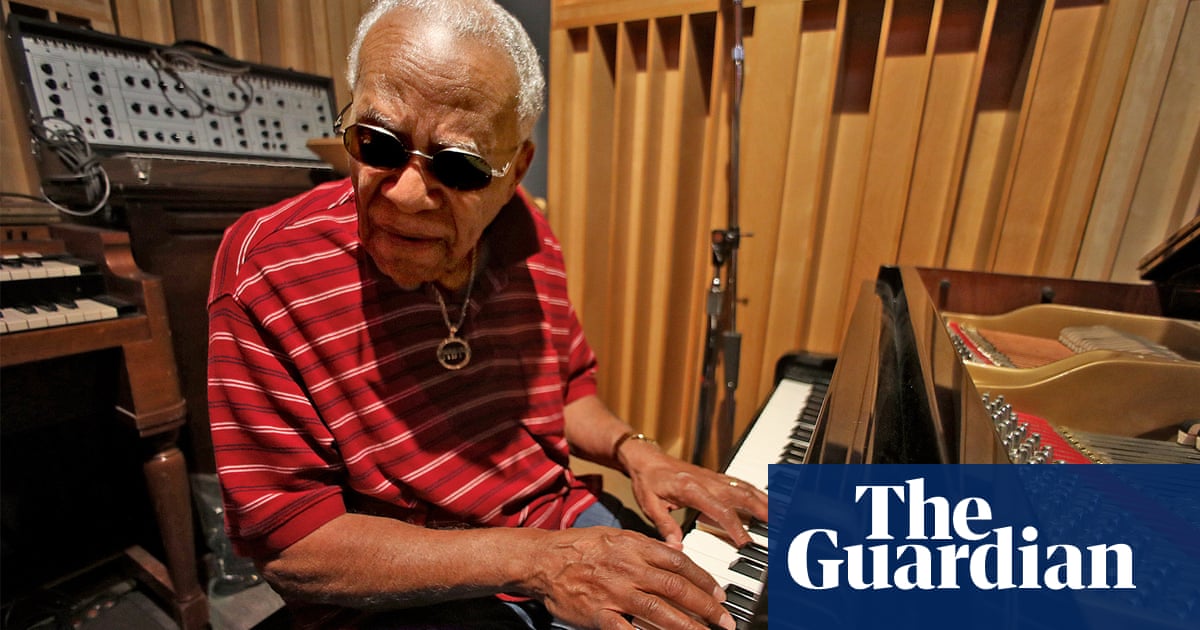
hen Swingin’ the Dream opened on Broadway on 29 November 1939, the creators of this jazz version of A Midsummer Night’s Dream had every expectation of a smash hit. The music alone seemed worth the price of admission. Among the hits were Ain’t Misbehavin’, I Can’t Give You Anything But Love, Jeepers Creepers, and Darn That Dream. All this was intermingled with swing renditions of Mendelssohn’s Wedding March, from his 1842 Midsummer Night’s Dream. The music was performed by some of the biggest names around: Bud Freeman’s band played on one side of the stage, Benny Goodman’s inter-racial group on the other, and in the centre Donald Voorhees conducted an orchestra of 50.
The Shakespeare musical had a 150-strong cast, featuring many of America’s most popular black artists, including Maxine Sullivan as Titania, Juano Hernandez as Oberon and none other than Louis Armstrong as Bottom. The trumpeter reportedly turned down a part in another Broadway-bound jazz show, Young Man With a Horn, to star in it. Butterfly McQueen (AKA Prissy in Gone With the Wind) played Puck. Agnes de Mille, who a year later would break new ground in her Black Ritual for the newly formed Negro Unit of Ballet Theatre, oversaw the choreography.
The dancers included the great tap star Bill Bailey, the three Dandridge sisters (who played Titania’s pixie attendants), as well as 13 tireless jitterbugging couples. With set designs based on Walt Disney cartoons, it looked great, too. Sullivan’s Titania entered enthroned in a “World of Tomorrow” electric wheelchair, microphones appeared in the shape of snakes and caterpillars, while a pull-down bed hung from a tree.
It seemed destined to a be a hit, and a startlingly original one. But Swingin’ the Dream closed after only 13 performances – and lost its investors a staggering $100,000, the equivalent to about $2m today. Critics continue to debate what went wrong, hampered by the fact that no script for the show, other than a few pages from the Pyramus and Thisbe scene, has ever been found, despite extensive searches. Towards the end of the brief run, CBS radio aired Sullivan and Armstrong performing some songs and scenes, but that recording is lost as well.
Now, eight decades on, the Royal Shakespeare Company, the Young Vic and New York’s Theatre for a New Audience are joining forces to livestream a concert of a “work in progress” based on the show’s surviving music, presented by Kwame Kwei-Armah. For the Young Vic’s artistic director, the “desire to fuse two great art forms, jazz and verse – and in doing so make a statement about the state of the American nation at the time – feels ripe for exploring now”.
The show’s creators,Erik Charell and Gilbert Seldes,set their musical in 1890s New Orleans. The programme reminded playgoers that the “Athens of the Southland” was the birthplace of swing. A helpful summary of the adaptation was provided by Philip Carter in his review for the Amsterdam News, New York’s leading black newspaper. The gist is that the story revolves around the wedding of a Louisiana governor. The two men who work for him as secretaries are in love with his cousin’s daughter.
This leaves another southern belle – who loves one of the lads – out in the cold. The “plantation hands”, Carter wrote, “decide to perform A Midsummer Night’s Dream as the wedding entertainment, and the four lovers wander into the magic woods where their love affairs are first entangled and then straightened out by the magic of Oberon, King of the Pixies. All of this forms a background for Jackie Mabley and her company of actors to stumble through the lines of a mock rehearsal of their play.”
White actors were cast as the governor and his circle, black performers played the “rude mechanicals” and the many spirits that inhabit the woods. While casting reinforced class and racial boundaries, it nevertheless broke gendered ones. Quince, played by the gifted standup comic “Moms” Mabley, was a midwife, and Alberta Perkins played Peaceful Pearl, a cook. Snug is a cleaner, Snout a steeplejack, Flute an iceman, and Louis Armstrong’s Bottom a fireman.
Seldes and Charell had hoped to capitalise on the success the previous year of The Boys from Syracuse, the first major Shakespeare musical, based on The Comedy of Errors. Its all-white cast made effective use of swing and the show ran for 235 performances. The defining feature of the emerging Shakespeare musical was hybridity: mixing musical styles, mixing Shakespeare’s language with contemporary American idiom, mixing highbrow and lowbrow – and, in Swingin’ the Dream mixing races, establishing a precedent for Kiss Me, Kate and West Side Story. But getting the mix right wasn’t easy.
Contemporaries offered various explanations for why the show failed. Some blamed the venue, the cavernous Center Theatre, which seated 3,700. As a postmortem in Theatre Arts Monthly put it: “A dreadful distance separated the audience from dancers and music alike. Even the Pied Piper of Manhattan, Benny Goodman himself, could not draw his followers from the misty wastes of that huge and too elegant auditorium.” While praising the production’s “sheer mass and charge”, the review concluded that the “showmanship was not there, nor any ingenuity in direction or planning which would have made of a collection of brilliant ideas a functioning whole”.
John Mason Brown wrote in the New York Post that the show was at its best when it “pushed Shakespeare offstage” and stuck to the dancing and music, adding that by clinging so closely to the original, the show’s creators “may please the school marms, but they silence Mr Goodman and Mr Armstrong for too long a while”. Brooks Atkinson went even further in his New York Times review, wondering whether the show would have done better “by forgetting Shakespeare altogether”.
While the show never had an out-of-town run to iron out its problems, the Pittsburgh Courier reported that, after opening night, it “was greatly improved with hasty revisions”. Had the run extended, it would likely have become sharper. But salaries for its many performers ran to more than $6,000 a week, and that didn’t include Benny Goodman’s band. Faced with so many empty seats in the huge theatre, the producers resorted to giving away tickets. The Thursday before it closed, reported the New York Times, the place was packed, but the gate that night was only $596. While the cost of a seat – the most expensive went for $2.20 – was kept deliberately low, the show failed to attract white audiences and didn’t seem to make much of an effort to cultivate black theatergoers either.
Did Swingin’ the Dream arrive on Broadway ahead of its moment? White audiences certainly didn’t seem ready to pay to see black performers do Shakespeare. You catch a glimpse of this attitude in the dismissive review in Time, which declared that “no self-respecting Bard-hunter would stalk such mongrel prey”, while the Boston Globe notified its readers that “the cast will be Negro”.
Yet the musical was also very much of its time, and not only in its embrace of swing. However progressive its creators imagined their show to be, they were reluctant to give their black stars the improvisational freedom that was at the heart of swing, and relegated them to what verged on demeaning minstrelsy roles. Black critics were especially sensitive to this. William G Nunn, writing in the Pittsburgh Courier, faulted Charell for failing to “allow his super cast of stars to be themselves”.
Bud Freeman, one of the few white artists in the production, later wrote in his autobiography that “if Charell had known the greatness of the black people, he could have had a revue that would still be running”. It didn’t help that the show’s creative control mirrored the world of the play, in which white actors were cast as those in charge, while black actors played the “plantation hands”.
If anyone in the cast chafed at this, none said so on the record. In 1939, black performers faced hard choices as the Great Depression extended into its 10th year. In the theatre world at least, things had improved since the government’s creation, in 1936, of the Federal Negro Theatre, part of the New Deal’s Federal Theatre Project, which saved the careers of many unemployed actors.
While finding work in difficult times was a good thing, was accepting stereotypic roles too high a price to pay? Philip Carter asked as much in the Amsterdam News: “There are those who may feel that the ‘Dream’ deserves the same sort of support of any other enterprise when there are 150 Negroes drawing salaries. But the same high ideals will cause still others to feel that such support only shoves farther into the distant future the day when Negro actors and Negro art will be recognised without lampooning and burlesque.”
As the Pittsburgh Courier reported, the abrupt closure of Swingin’ the Dream put “more than 200 performers again on the job wanted list, most of them colored”. And six months later, opportunities for black actors across America would be sharply curtailed, as the House Un-American Activities Committee shut down the entire Federal Theatre Project, deeming it subversive, and declaring that its pursuit of “racial equality forms a vital part of the Communistic teaching and practices”.
The live-streamed concert may well be a harbinger of Shakespeare in a post-pandemic world, with theatre companies looking to the past as they struggle towards a more inclusive and collaborative future. If so, the story of Swingin’ the Dream embodies both the perils and the promise of this future. In the meantime, it will be good, under lockdown, to hear some remarkable jazz and imagine the great Satchmo on his horn, breathing new life into Bottom’s “most rare” dream.
• Swinging’ the Dream will be livestreamed on 9 January. James Shapiro is professor of English at Columbia University in New York. He is the author of Shakespeare in a Divided America.












